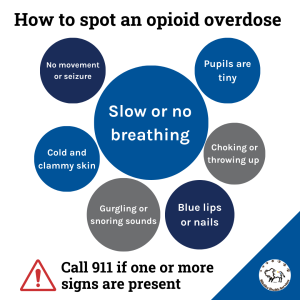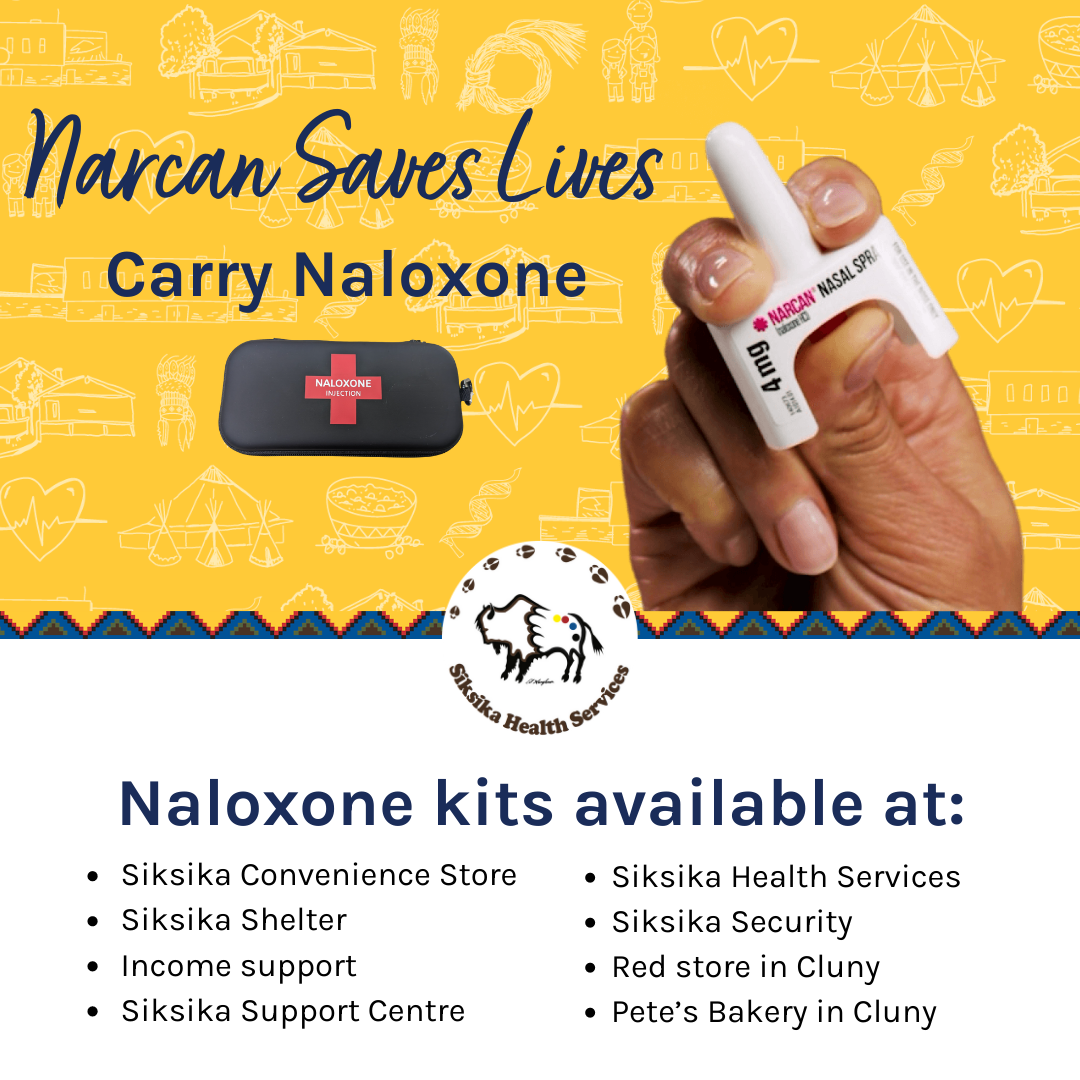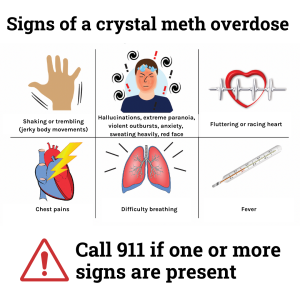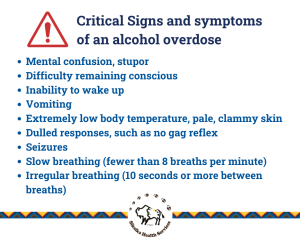Substance Use and Addictions
The risk of poisoning from drug or alcohol use on Siksika Nation is high at this time. You can’t save yourself during drug poisoning, but we can save each other. Don’t use drugs alone. If you’re using drugs, or are with someone who is using, these are the signs and symptoms to watch out for. If they happen, don’t leave things to chance, call 911 immediately.
Call the Addictions Services Team at 403-734-5687 between the hours of 8:30am-4:30pm on weekdays, or call 403-734-1212 after hours for support.
What are opioids?
Opioids are drugs with pain relieving properties that are used primarily to treat pain. Opioids can also induce euphoria (feeling high), which gives them the potential to be used improperly. Opioids can also be produced or obtained illegally.
Opioids can be prescribed medications:
- codeine
- fentanyl
- morphine
- oxycodone
- hydromorphone

Short Term Effects
The short-term side effects of using opioids may include:
- drowsiness
- constipation
- impotence in men
- nausea and vomiting
- euphoria (feeling high)
- difficulty breathing, which can lead to or worsen sleep apnea
- headaches, dizziness and confusion, which can lead to falls and fractures
Long Term Effects
The longer-term side effects of using opioids may include:
- increased tolerance
- substance use disorder or dependence
- liver damage
- infertility in women
- worsening pain (known as “opioid-induced hyperalgesia”)
- life-threatening withdrawal symptoms in babies born to mothers taking opioids
Opioids are addictive
If you have been taking opioids for a period of time, your body becomes accustomed to or tolerant of that opioid dose. You may require increasing amounts of the opioid to get the same effect.
If you stop taking the drug for a few days and then start taking the drug at the same dose you were used to, it may increase chances of an overdose. This is because you lose tolerance to the medication when stopping it, even for a few days.
When someone is affected by substance use disorder, or addiction, the drug becomes the focus of their feelings, thoughts and activities.
If you have been prescribed an opioid medicine, it should:
- only be taken as prescribed
- never be used by someone for whom it was not prescribed
- never be taken with alcohol or other medications (except as prescribed)
Keep your medication safe to help prevent problematic use by others by:
- never sharing your medication with anyone else
- this is illegal and may also cause serious harm or death to the other person
- keeping track of the amount of pills remaining in a package
- storing opioids in a safe and secure place, out of the reach of children and teenagers
Save a life, carry naloxone
How naloxone works
Naloxone is a fast-acting drug used to temporarily reverse the effects of opioid overdoses.
Naloxone can restore breathing within 2 to 5 minutes.
Naloxone only works if you have opioids in your system, such as:
- fentanyl
- heroin
- morphine
- codeine
If you administer naloxone, call 911 immediately.
While naloxone is only active in the body for 20 to 90 minutes, the effects of most opioids last longer. This means that the effects of naloxone are likely to wear off before the opioids are gone from the body, which can cause breathing to stop again.
Naloxone may need to be used again, depending on the amount or type of opioid taken, or how the opioids were taken (for example: oral, injection).
If you suspect an overdose:
- Call 911 immediately.
- Don’t wait until the person shows all the symptoms. If you see one symptom, call 911. DON’T PLAY DOCTOR because you fear getting into trouble. (Good Samaritan Act- protects you from a simple drug possession charges)
- Do not leave the person alone, stay with person until help arrives.
- Avoid mixing alcohol and drugs
- If you start using opioids after taking a break, even if it’s been a few days, don’t use the same amount, start low and slow.
- If you use a stronger opioid start low and slow
- Shake and wake: call their name loud, keep them up.
- Turn them on their side
Naloxone is safe
You cannot use naloxone improperly and does not create dependence. It is safe to keep a naloxone kit on hand.
Types of naloxone kits available
- Naloxone nasal spray is sprayed directly into the nose, where it is absorbed. It starts to take effect in 2 to 3 minutes. Learn how to give naloxone spray (video).
- Naloxone injectable is injected into any muscle in the body, such as the arm or thigh. It starts to take effect in 3 to 5 minutes. Learn how to give a naloxone injection (video).

What is meth?
Methamphetamine is a powerful, highly addictive stimulant that affects the central nervous system. It takes the form of a white, odorless, bitter-tasting crystalline powder that easily dissolves in water or alcohol.
The street drug is usually a white crystal-like powder, called “crystal meth.” This powder can be snorted up the nose, smoked, swallowed, or dissolved and injected into a vein.

Short Term Effects
- increased attention and decreased fatigue
- increased activity and wakefulness
- decreased appetite
- euphoria and rush
- increased respiration
- rapid/irregular heartbeat
- hyperthermia
Long Term Effects
Long-term use of methamphetamine can lead to significant psychological problems, including:
- Delusional behavior
- Extreme paranoia
- Major mood swings
- Insomnia (severe inability to sleep)
Other symptoms may include:
- Missing and rotted teeth (called “meth mouth”)
- Repeated infections
- Severe weight loss
- Skin sores (abscesses or boils)
Methamphetamine most often causes a general feeling of wellness (euphoria) that is most often called a “rush.” Other symptoms are increased heart rate, increased blood pressure, sweating, restlessness, dry mouth, elevated body temperature, and large, wide pupils.
The length of time methamphetamines stay active can be much longer than for cocaine and other stimulants. Some paranoid delusions can last for 15 hours.
Prognosis
How well a person does depends on the amount of drug they took and how quickly they were treated. The faster a person gets medical help, the better the chance for recovery.
Psychosis and paranoia may last up to 1 year, even with aggressive medical treatment. Memory loss and difficulty sleeping may be permanent. Skin changes and tooth loss are permanent unless the person has cosmetic surgery or dentistry to correct the problems. Further disability may occur if the person had a heart attack or a stroke. These can happen if the drug caused very high blood pressure and body temperatures. Infections and other complications in organs such as the heart, brain, kidneys, liver, and spine, may occur as a result of injection. There may be permanent damage to the organs even if the person receives treatment. The antibiotics used to treat these infections may also result in complications.
The long-term outlook depends on what organs are affected. Permanent damage may occur, which may cause:
- Seizures, stroke, and paralysis
- Chronic anxiety and psychosis (severe mental disorders)
- Decreased mental functioning
- Heart problems
- Kidney failure that requires dialysis (kidney machine)
- Destruction of muscles, which can lead to amputation
A large methamphetamine overdose can cause death.
What is an alcohol overdose?
An alcohol overdose occurs when there is so much alcohol in the bloodstream that areas of the brain controlling basic life-support functions—such as breathing, heart rate, and temperature control—begin to shut down.

Who May Be at Risk?
Anyone who consumes too much alcohol too quickly may be in danger of an alcohol overdose. This is especially true of individuals who engage in binge drinking, defined as a pattern of drinking that brings blood alcohol concentration (BAC) to 0.08 percent or higher,* typically occurring after a woman consumes 4 drinks or a man consumes 5 drinks in about 2 hours.
Teenagers and young adults who drink may be at particular risk for alcohol overdose. Drinking such large quantities of alcohol can overwhelm the body’s ability to break down and clear alcohol from the bloodstream. This leads to rapid increases in BAC and significantly impairs brain and other bodily functions.
Don’t Mix Substances
Alcohol use and taking opioids or sedative-hypnotics, such as sleep and anti-anxiety medications, can increase your risk of an overdose.
Even drinking alcohol while taking over-the-counter antihistamines can be dangerous. Using alcohol with opioid pain relievers such as oxycodone and morphine or illicit opioids such as heroin is also a very dangerous combination.
Like alcohol, these drugs suppress areas in the brain that control vital functions such as breathing. Ingesting alcohol and other drugs together intensifies their individual effects and could produce an overdose with even moderate amounts of alcohol.
Get Help Immediately
Do not wait for the person to have all the symptoms to call 911 for help. Don’t play doctor—cold showers, hot coffee, and walking do not reverse the effects of alcohol overdose and could actually make things worse.
Do not leave an intoxicated person alone, as they are at risk of getting injured from falling or choking. Keep the person on the ground in a sitting or partially upright position rather than in a chair.
Help a person who is vomiting. Have him or her lean forward to prevent choking. If a person is unconscious or lying down, roll him or her onto one side with an ear toward the ground to prevent choking.
If you suspect that someone has an alcohol overdose, call 911 for help immediately.
